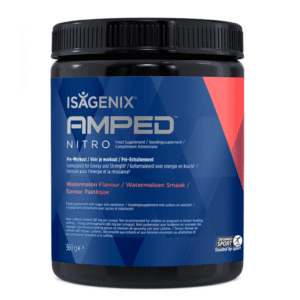
Intermittent fasting continues to garner attention as a weight loss and anti-aging tool. While these applications are important, researchers are exploring other areas that could have significant health implications and benefits that you might not have heard about.
What is intermittent fasting, and what does it do?
Intermittent fasting, defined as periods of voluntary abstinence from food and drink, is an ancient practice followed in a variety of different formats by populations globally (1). However, it hasn’t been until relatively recently that scientists have been able to uncover some of the key biological underpinnings beyond the benefits of this dietary pattern.
We now know that intermittent fasting elicits ancient adaptive cellular responses that are integrated between and within organs in a manner that supports blood sugar regulation and increases stress resistance (2). At the cellular level, pathways that enhance defenses against oxidative and metabolic stress and remove or repair damaged molecules are activated (3).
Yet, most people consume three meals a day plus snacks, so intermittent fasting and its associated benefits do not occur.
The benefits of metabolic flexibility
One area currently under scientific study — and of notable potential health benefit — is increased metabolic flexibility. Intermittent fasting promotes the body’s ability to switch its fuel source, promoting greater metabolic flexibility (3).
In our bodies, the two main energy sources are carbohydrates (via glucose) and fat (via fatty acids). Generally, after we eat a meal that contains a mix of nutrients, glucose is used for energy and fat is stored in adipose tissue. During periods of fasting, fat in our adipose tissue (triglycerides) is broken down into fatty acids and glycerol, which are used for energy. The liver converts fatty acids into ketone bodies, which provide a major source of energy for many tissues, especially brain tissue, during fasting (4).
Ketone bodies and their effect on health
The metabolic switch from the use of glucose as a fuel source to the use of fatty acids and ketone bodies results in a reduced respiratory exchange ratio (the ratio of carbon dioxide produced to oxygen consumed), indicating the greater metabolic flexibility and efficiency of energy production from fatty acids and ketone bodies (4). Being more metabolically flexible may be tied to a healthier overall metabolism, though more research for intermittent fasting is needed.
Ketone bodies are not just fuel used during periods of fasting; they are also potent signaling molecules with major effects on cell and organ functions (5). They regulate the expression and activity of many proteins and molecules that are known to influence health and aging. For example, ketone bodies stimulate expression of the gene for a special protein called brain-derived neurotrophic factor, which has positive implications for brain health and psychiatric and neurodegenerative disorders (3).
Autophagy and cell maintenance
Intermittent fasting also stimulates autophagy while inhibiting the mTOR (mammalian target of rapamycin) protein synthesis pathway (2). Autophagy is a natural, regulated mechanism of the cell that removes unnecessary or dysfunctional components (1).
Together, these responses enable cells to remove oxidatively damaged proteins and cellular components, such as mitochondria, and recycle undamaged molecular constituents while temporarily reducing global protein synthesis to conserve energy and molecular resources (6). You can think of this as a sort of cellular cleanup. However, these pathways are untapped or suppressed in persons who overeat and are sedentary (6).
While intermittent fasting is still an emerging and active area of research, this dietary pattern has a lot more to offer than strictly weight loss.
References:
- Patterson RE, Sears DD. Metabolic Effects of Intermittent Fasting. Annu Rev Nutr. 2017 Aug 21;37:371-393.
- de Cabo R, Mattson MP. Effects of Intermittent Fasting on Health, Aging, and Disease. N Engl J Med. 2019 Dec 26;381(26):2541-2551.
- Mattson MP, Moehl K, Ghena N, Schmaedick M, Cheng A. Intermittent metabolic switching, neuroplasticity and brain health. Nat Rev Neurosci. 2018 Feb;19(2):63-80.
- Di Francesco A, Di Germanio C, Bernier M, de Cabo R. A time to fast. Science. 2018 Nov 16;362(6416):770-775.
- Newman JC, Verdin E. β-Hydroxybutyrate: A Signaling Metabolite. Annu Rev Nutr. 2017 Aug 21;37:51-76.
- Mattson MP, Arumugam TV. Hallmarks of Brain Aging: Adaptive and Pathological Modification by Metabolic States. Cell Metab. 2018 Jun 5;27(6):1176-1199.
Nourish for Life

A Cleanse Day companion.
Buy Retail £32 or Subscribe & Save: £24
Shop All Products
Products you might like
-
Sale!

Isagenix AMPED Hydrate
Original price was: £39.00.£29.00Current price is: £29.00. -
Sale!

Isagenix e-Shots
Original price was: £23.00.£17.00Current price is: £17.00. -
Sale!

Isagenix IsaPro®
Original price was: £57.00.£43.00Current price is: £43.00. -
Sale!

Isagenix AMPED Nitro
Original price was: £45.00.£40.00Current price is: £40.00. -
Sale!

Isagenix AMPED Post-Workout
Original price was: £31.00.£28.00Current price is: £28.00. -
Sale!

IsaLean Whole Blend Bar
Original price was: £47.00.£35.00Current price is: £35.00. -
Sale!

Isagenix IsaDelights
Original price was: £39.00.£29.00Current price is: £29.00. -
Sale!

Isagenix Whey Thins
Original price was: £24.00.£18.00Current price is: £18.00.



